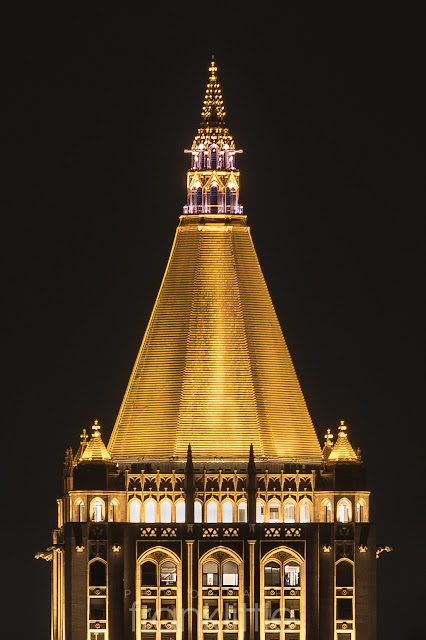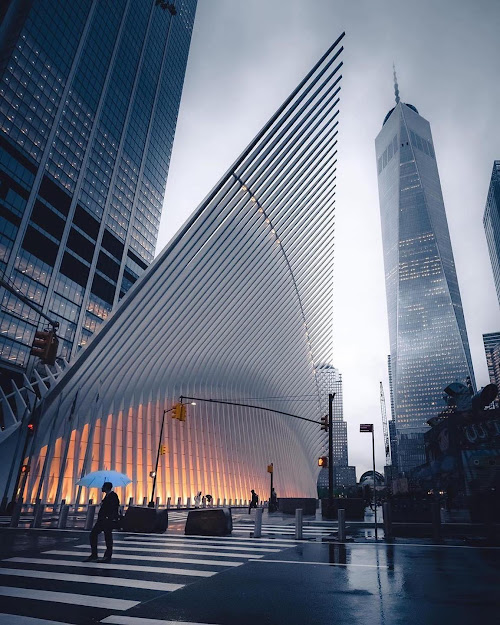Blog sobre Arquitectura, urbanismo, grandes infraestructuras y todo lo relacionado con la ciudad que nunca duerme.
martes, 20 de octubre de 2020
sábado, 3 de octubre de 2020
martes, 29 de septiembre de 2020
domingo, 20 de septiembre de 2020
viernes, 11 de septiembre de 2020
jueves, 27 de agosto de 2020
Inauguración del World Trade Center (1973)
El
gobernador del estado de Nueva York, Nelson Rockefeller (quien además
fue el promotor de la obra), habla ante invitados y el público
abarrotando el lobby de la Torre Norte (1 WTC) del World
Trade Center, en la ceremonia de inauguración oficial del World Trade
Center, la mañana del 4 de abril de 1973.
Foto: Bettmann/Getty Images.
sábado, 15 de agosto de 2020
domingo, 2 de agosto de 2020
viernes, 31 de julio de 2020
Map of colonial New York City (1770)
Foto: NYC Urbanism
The
map of New York City by British military officer Bernard Ratzer in 1770
offers a detailed view of Brooklyn and Manhattan in the years leading
up to the Revolutionary War. The British colony had greatly expanded in
the previous decades, growing from a small port city to a bustling
metropolis. Two years after the map was printed Alexander #Hamilton would land in New York and three years later the first shots of the Revolutionary War would be fired in Lexington and Concord.
The Brooklyn Historical Society, which has one of the three original copies in existence detailed the map and its importance:
"It shows two views of a bustling and growing city set amid fields and forests. A large map provides a birds-eye view of lower Manhattan Island, eastern New Jersey, and—across the East River—the farms of “Brookland” (Brooklyn). At the bottom of the map, Bernard Ratzer included a view of busy New York harbor as seen from Governor’s Island. This panorama shows an incredible level of detail, including ships, buildings, and the coastline. It is so detailed that it even shows smoke rising from buildings in Manhattan. The Ratzer Map gives us many clues about New Yorkers of 240 years ago. We see the development of city infrastructure, including sometimes twisting, sometimes grid-like roads. Clusters of buildings indicate where most people lived and worked. The names of farms and large estates tell us who owned land. The map shows important natural features, such as swamps, ponds, rivers and streams. It also shows us ways that New Yorkers changed the natural landscape by planting pastures, orchards, and gardens."
The Brooklyn Historical Society, which has one of the three original copies in existence detailed the map and its importance:
"It shows two views of a bustling and growing city set amid fields and forests. A large map provides a birds-eye view of lower Manhattan Island, eastern New Jersey, and—across the East River—the farms of “Brookland” (Brooklyn). At the bottom of the map, Bernard Ratzer included a view of busy New York harbor as seen from Governor’s Island. This panorama shows an incredible level of detail, including ships, buildings, and the coastline. It is so detailed that it even shows smoke rising from buildings in Manhattan. The Ratzer Map gives us many clues about New Yorkers of 240 years ago. We see the development of city infrastructure, including sometimes twisting, sometimes grid-like roads. Clusters of buildings indicate where most people lived and worked. The names of farms and large estates tell us who owned land. The map shows important natural features, such as swamps, ponds, rivers and streams. It also shows us ways that New Yorkers changed the natural landscape by planting pastures, orchards, and gardens."
martes, 28 de julio de 2020
domingo, 26 de julio de 2020
viernes, 24 de julio de 2020
Statue of Liberty (Independence Day)
The
Statue of Liberty is amongst the most recognizable symbols of the
values that represent our American ideals. Liberty Island, home of the
statue, was utilized by the Lenape people and their ancestors for at
least the last 1500 years. Following European colonization, the island
has been held privately and publicly, and was used for different
purposes as the needs of the people who interacted with it changed. It
has served as a military encampment and fort, it has been covered almost
completely in housing for people to support those operations, and, for a
brief period in the 1730s, it even operated as a quarantine station for
the sick. Ahead of the Revolutionary War, it was burned to punish Tory
sympathizers residing there. In the lead up to the War of 1812,
construction began on an eleven-pointed star-shaped fort built to defend
New York Harbor from a British naval threat that never came.
Fort Wood
was completed in 1814 and served again as a quarantine station until the
Civil War when it was briefly used as a prison. In 1877, Liberty
Enlightening the World, or, as we know her, The Statue of Liberty, was
presented to the United States as a gift from France. Fort Wood was
selected to be the location where the statue would be erected, with the
fort itself serving as her base. Until 1937, the statue and the military
shared the island until it was transferred to U.S. Department of the Interior
control, and military operations ceased. Liberty Island and the Statue
of Liberty are amongst the greatest symbols of what it means to be an
American, and evidence of thousands of years of uses, identities, and
motivations are mixed into the soil Lady Liberty stands upon. Just as
time and humanity have shaped what the landscape of the island has
become at different points in history, time and humanity will continue
to shape and reshape wider American landscapes, identities, and ideals.
Justice, inclusivity, and opportunities for all are ideals we strive for
on this Independence Day and those to come.
domingo, 19 de julio de 2020
viernes, 3 de julio de 2020
miércoles, 1 de julio de 2020
Nuevo mirador del Chrysler Building
Buenas
noticias: igual que en el Empire State Building, Rockefeller Center y
One World Trade Center, pronto habrá un mirador desde Chrysler Building,
en su planta 61.
lunes, 29 de junio de 2020
domingo, 28 de junio de 2020
sábado, 27 de junio de 2020
viernes, 22 de mayo de 2020
lunes, 18 de mayo de 2020
domingo, 17 de mayo de 2020
viernes, 10 de abril de 2020
jueves, 9 de abril de 2020
lunes, 6 de abril de 2020
viernes, 3 de abril de 2020
miércoles, 1 de abril de 2020
sábado, 1 de febrero de 2020
viernes, 10 de enero de 2020
30 Hudson Yards
. Localización: Nueva York (EEUU)
. Año: 2016 - 2019
. Arquitectura-Ingeniería: Kohn Pedersen Fox
. Altura: 386 m
. Plantas: 101
. Uso: Oficinas
. Superficie: 362.000 m2
martes, 7 de enero de 2020
domingo, 5 de enero de 2020
Suscribirse a:
Comentarios (Atom)























